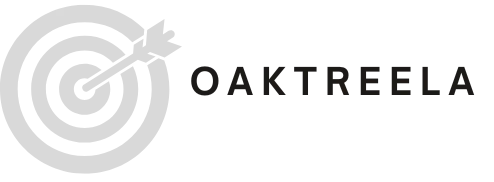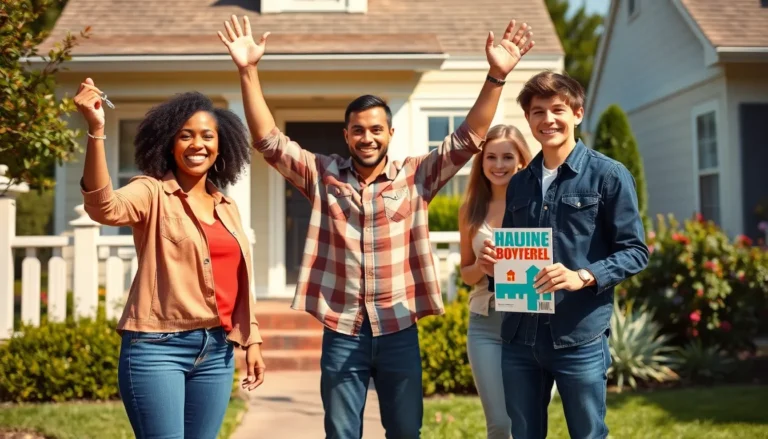Table of Contents
ToggleBuying a home often feels like a game of Monopoly where you’re stuck at Go, waiting for that elusive $200. But what if there were ways to skip the down payment and still land your dream property? That’s right! No more saving those pennies for the next decade.
Understanding Loan Options With No Down Payment
Exploring loan options without a down payment offers a viable path for aspiring homeowners. Various programs assist individuals in securing financing without significant upfront costs.
FHA loans represent one popular choice, designed for low-to-moderate-income borrowers. These loans allow for down payments as low as 3.5 percent; however, options exist for securing loans without any down payment requirements through specific guidelines.
VA loans also cater to eligible veterans and active military members. These loans provide 100 percent financing, enabling qualified buyers to purchase homes without a down payment.
USDA loans facilitate home purchases in designated rural and suburban areas for low-income buyers. Properties must meet specific criteria, but these loans offer 100 percent financing, eliminating the need for a down payment.
Many lenders promote conventional loans with low down payment alternatives. Programs like Fannie Mae’s HomeReady and Freddie Mac’s Home Possible allow for down payments as low as 3 percent, which can ease the burden on first-time buyers.
Additionally, some state and local governments provide down payment assistance programs. These programs often include grants or second mortgages to cover down payment costs, helping buyers enter the housing market more easily.
Identifying the right loan option requires thorough research. Each program has unique eligibility requirements and advantages, making it essential for prospective buyers to evaluate their financial situations carefully.
Types Of Loan Options

Various loan options exist for homebuyers looking to bypass the traditional down payment. Understanding these options helps in making informed decisions.
FHA Loans
FHA loans cater to low-to-moderate-income borrowers, focusing on accessibility. These government-backed loans require a minimum down payment of just 3.5 percent for those with a credit score above 580. Lower credit score applicants can still qualify with a 10 percent down payment. Borrowers also benefit from advantages like competitive interest rates and flexible lending terms. Due to these features, FHA loans appeal to first-time homebuyers seeking affordable financing methods.
VA Loans
VA loans offer 100 percent financing, making home buying easier for eligible veterans and active military members. No down payment is required, which aids in minimizing upfront costs. These loans also feature no private mortgage insurance (PMI), further reducing monthly payments. Additional benefits include competitive interest rates and favorable terms, enhancing affordability. Consequently, VA loans represent a significant opportunity for those who have served in the military.
USDA Loans
USDA loans support low-income buyers in qualifying rural and suburban areas, allowing for 100 percent financing. Income limits exist, ensuring assistance reaches those in need. Borrowers can access lower mortgage payments due to the lack of down payment requirements. Real estate in eligible areas typically sees lower property values, making homeownership more attainable. With these features, USDA loans stand out as a viable option for eligible applicants seeking affordable housing solutions.
Benefits Of No Down Payment Loans
No down payment loans offer significant advantages for prospective homebuyers. Accessing these loans enables individuals to purchase a home without the burdensome financial requirement of a down payment. Homeownership becomes achievable for those with limited savings, allowing a broader range of buyers to enter the housing market.
Affordability plays a crucial role in the benefits of no down payment loans. By eliminating the need for a sizable upfront payment, borrowers can allocate financial resources toward closing costs or home improvements. This flexibility helps create a more manageable financial situation for first-time buyers.
Lower entry costs also encourage individuals to explore homeownership when they may have otherwise opted to rent. With no down payment required, monthly mortgage payments typically become more accessible. This opens opportunities for buyers who find it challenging to save for a traditional down payment.
Moreover, qualifying for no down payment loans often comes with favorable terms. VA loans provide 100 percent financing while exempting eligible military members from private mortgage insurance. Similarly, USDA loans support rural homebuyers by offering financing with no down payment, ensuring candidates can maintain their socioeconomic stability.
Availability often extends beyond traditional loan options to include assistance programs. Various state and local governments offer initiatives aimed at helping first-time buyers reach their homeownership dreams. These programs often complement no down payment loans, further enhancing financial feasibility.
Exploring no down payment loans offers diverse benefits, including accessibility, affordability, and favorable financing terms for homebuyers.
Eligibility Requirements
Various loan options with no down payment come with specific eligibility requirements. FHA loans appeal to first-time homebuyers, requiring a minimum credit score of 580 for a 3.5 percent down payment. For those with lower credit scores, a down payment becomes necessary. VA loans offer the advantage of 100 percent financing exclusively to eligible veterans and active military members, so proof of service remains essential.
USDA loans focus on aiding low-income buyers in designated rural and suburban areas, demanding proof of income and property eligibility based on location. Borrowers must also meet certain income limits, typically set at 115 percent of the area’s median income. First-time homebuyers benefit from conventional loans like Fannie Mae’s HomeReady and Freddie Mac’s Home Possible, which often require a credit score of 620 or higher and debt-to-income ratios below 50 percent.
Some state and local programs offer additional assistance, such as down payment grants or second mortgages. These programs often target first-time buyers, so residency in the specific area may be a requirement. Prospective borrowers must verify all documentation, as lenders assess financial stability thoroughly to ensure qualification.
Income verification plays a crucial role in obtaining any loan, so providing accurate financial statements becomes necessary. Additionally, maintaining a stable employment history helps bolster approval chances. Each program’s unique requirements must match the borrower’s financial situation, making it vital to compare options carefully.
Exploring loan options with no down payment opens doors for many aspiring homeowners. These alternatives allow individuals to bypass the traditional savings hurdle and step into homeownership sooner. With programs like FHA, VA, and USDA loans, potential buyers can find financial solutions tailored to their needs.
The flexibility of these loans not only eases the financial burden but also encourages a wider range of buyers to invest in real estate. By leveraging available assistance programs and understanding eligibility requirements, homebuyers can navigate the market with confidence. Ultimately, the right loan option can turn the dream of owning a home into a reality.







